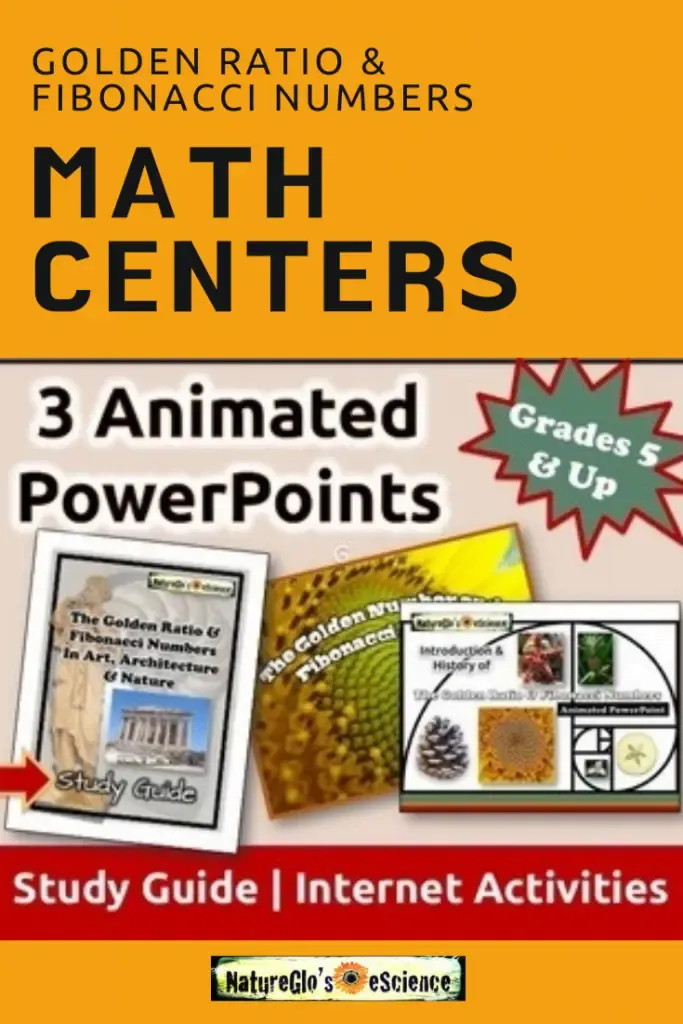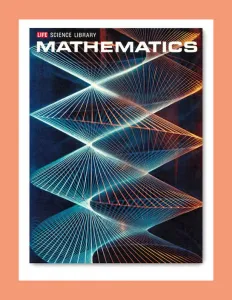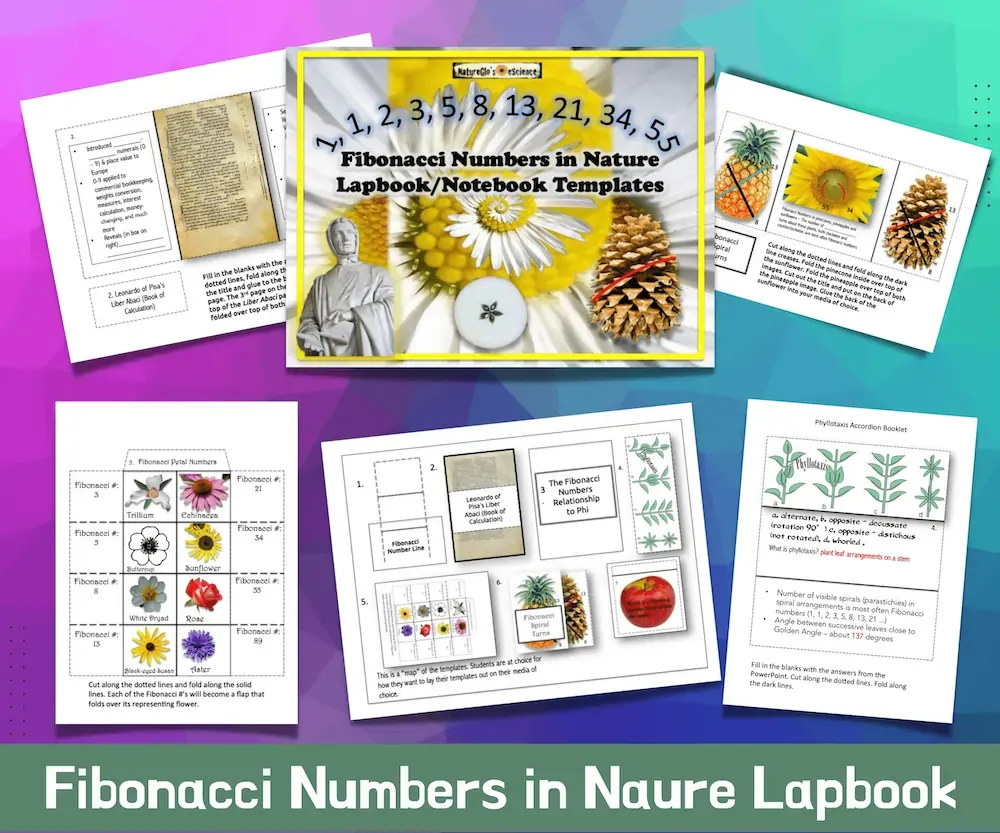7 Tips to Create Golden Ratio and Fibonacci Numbers Math Learning Centers
Here's how to implement my 7 tips to create Golden ratio and Fibonacci numbers math learning centers for your elementary, middle, and high school home or school learners.
First of all, what are these numbers?
What is the Golden ratio?
The golden ratio is 1.618 and is an irrational number or infinite number that goes on forever.
What are Fibonacci Numbers?
The Fibonacci numbers are a series of numbers that begins as 0, 1, 1, 2, 3, 5, 8, 13, 21, 34...etc. Add each subsequent numbers together to get the next number.
The golden ratio (1.618...etc.) has a close mathematical relationship with the Fibonacci numbers (0, 1, 1, 3, 5, 8, 13, 21...etc.), a series of numbers where each numbers is the sum of the two preceding numbers.
Below is a golden spiral drawn within a golden rectangle. A golden spiral is a logarithmic spiral that is grown according to phi, or the ratio of 1.618. The golden rectangle creation utilizes the Fibonacci numbers to build out the squares. The golden spiral is then drawn within the rectangle using a compass and connecting the spiral curves via each two corners per square.
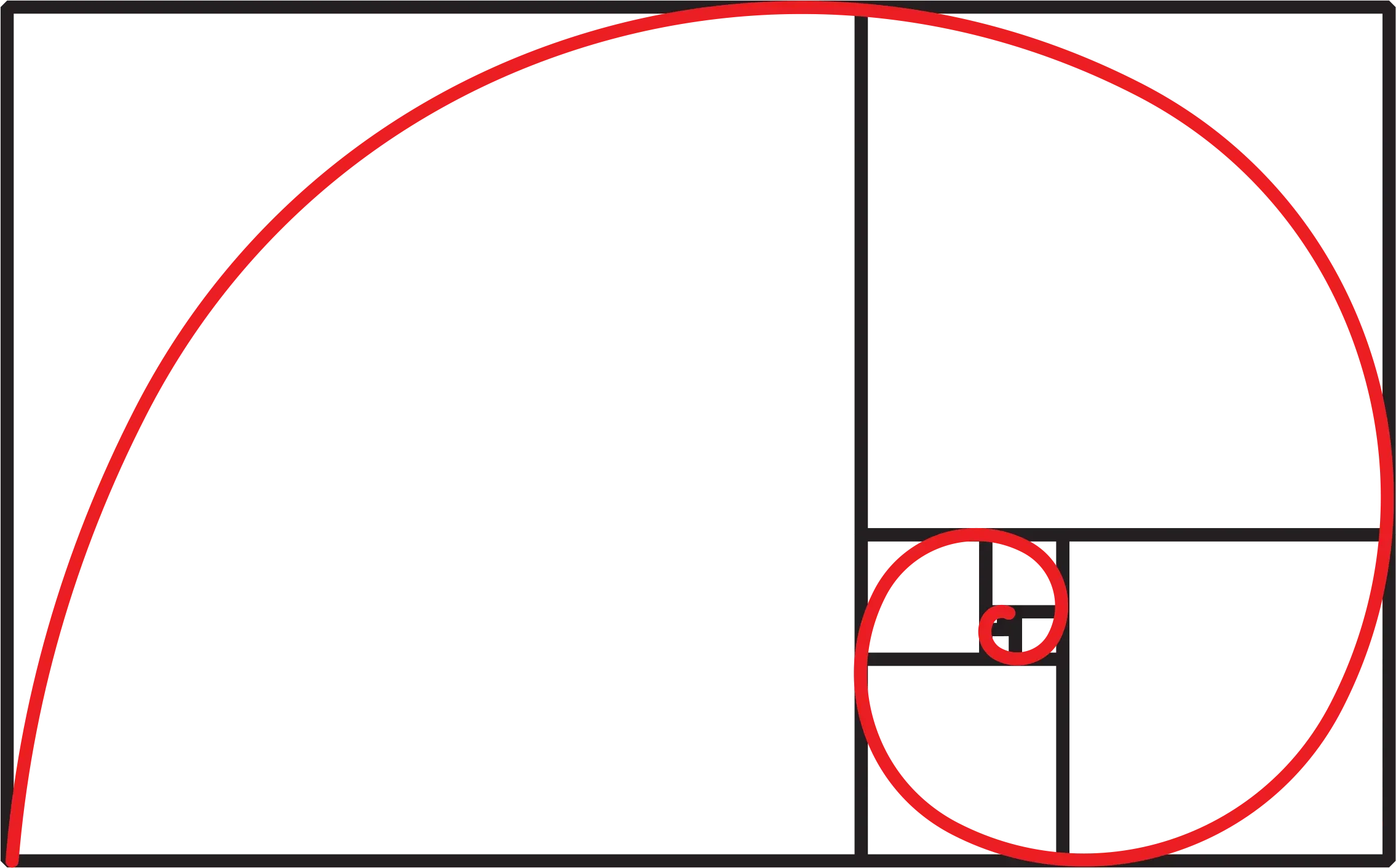
The creation of the golden spiral is a great illustration for how the golden ratio and Fibonacci numbers have an interconnected relationship.
How are the Golden ratio and Fibonacci numbers related?
If you divide two subsequent numbers from the Fibonacci number series, you get closer and closer to the Golden ratio, or 1.618. Interesting, hey?
Why Teach Kids about the Golden Ratio and Fibonacci Numbers?
Learning about the Golden Ratio and Fibonacci numbers makes math fun and relatable to the real world, especially the natural world, for kids.
When educators create a rich interactive learning environment through math learning centers, kids will get a great big kick out of learning nature's numbers, patterns and shapes.
The Golden ratio and Fibonacci numbers sequence are beautiful and fun numbers to play with for children.
Much of modern day mathematics education curriculum treats math as a sterile subject separate and unrelated to the other academics and the rest of the world. The true richness and beauty of math is completely lost in most home and school curriculum in favor of drill and kill practice.
Is it any wonder that there's a rising trend of math phobias, anxieties, and even disabilities among youth today?
Why are math test scores down? Hmmm. It's really no wonder at all since traditional math education is mostly disconnected from its practical use and meaning from everyday life where kids really need to learn to use math the most!
The Golden ratio and Fibonacci numbers are found throughout the natural world, especially the plant kingdom. The ancient Greeks used the Golden ratio in their buildings. One notable example being the Parthenon.
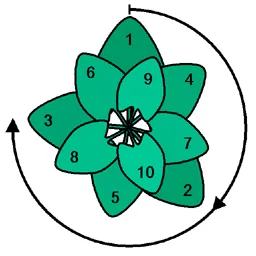
Here's an example of Fibonacci numbers describing how plants grow in a spiral fashion to get optimal sunlight.
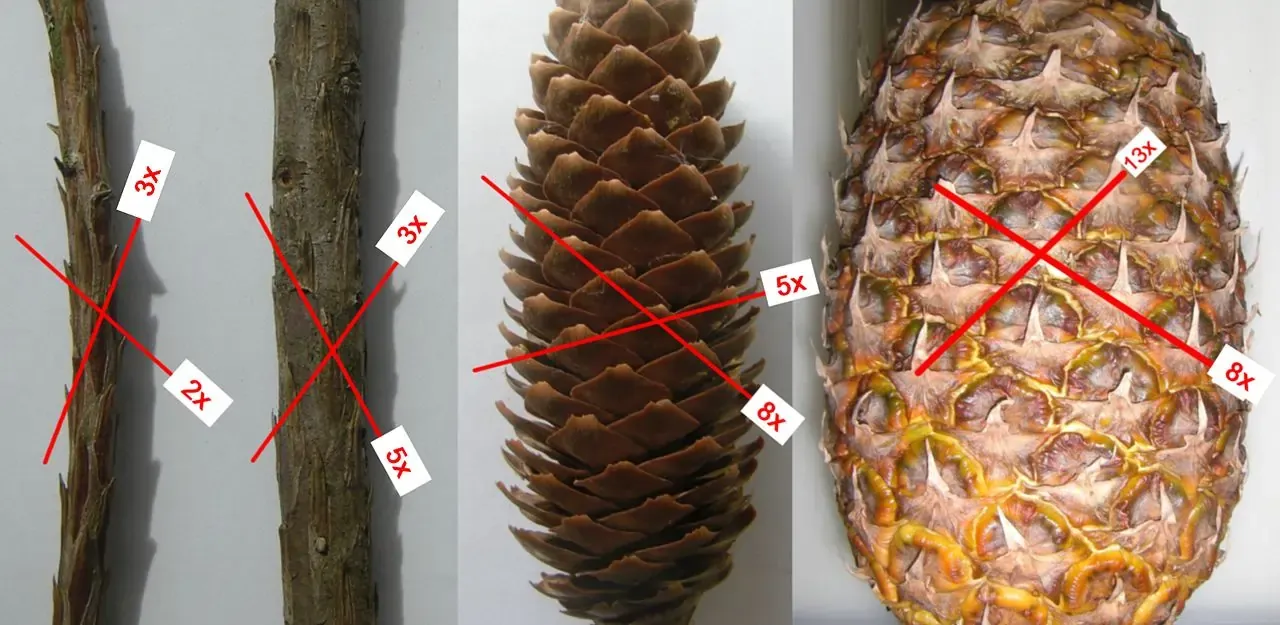
Here are examples of the Fibonacci numbers found in the numbers of spiral turns in pinecones and a pineapple.
Nature prefers the Fibonacci numbers for optimal growth in accordance with getting the most sunlight on, for example, leaves.
Below shows the golden ratio dimensions around the ancient Greek Parthenon.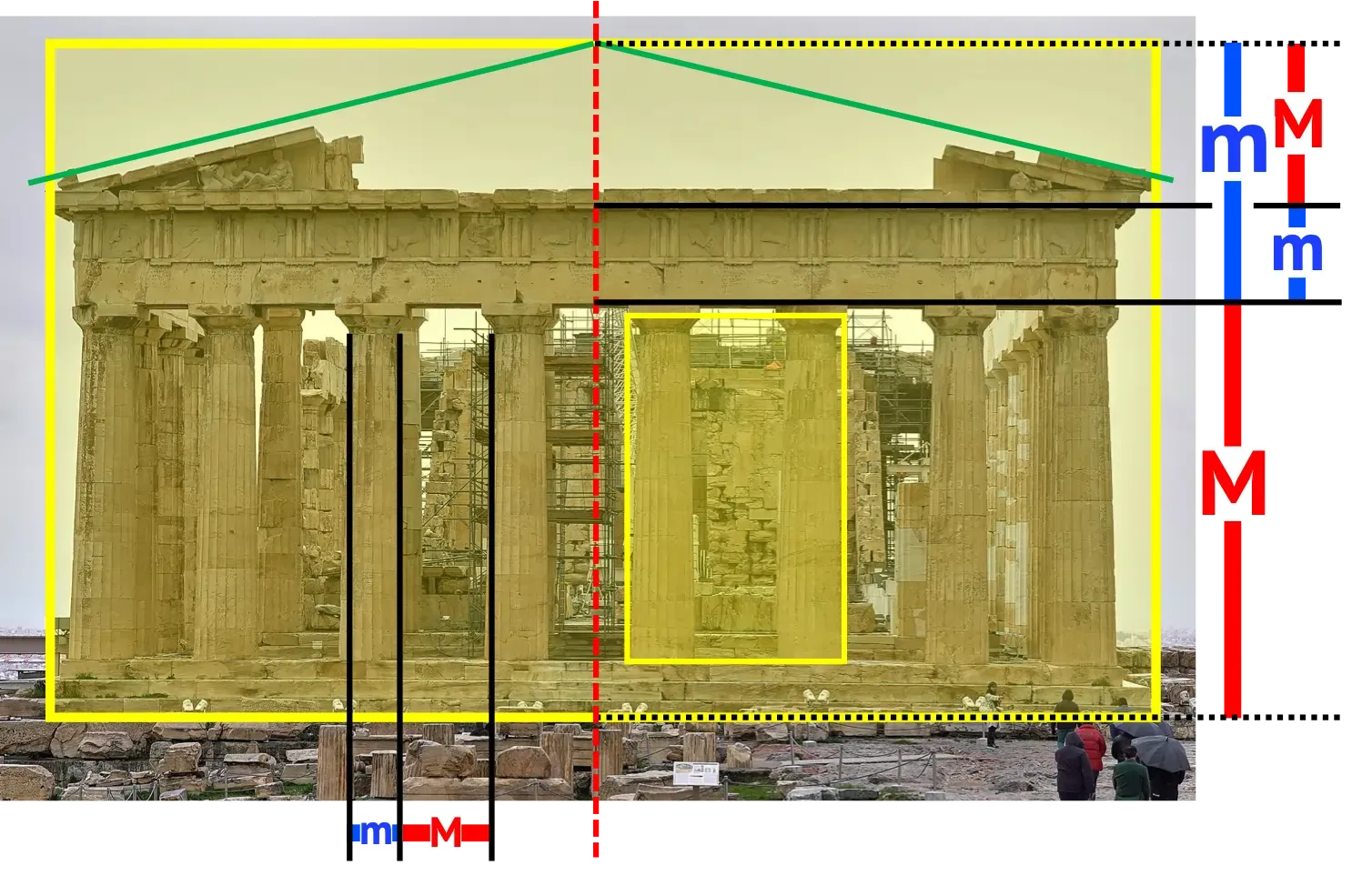
What Branch of Mathematics are the Golden ratio and Fibonacci Numbers Found in?
The Golden ratio and Fibonacci numbers are found within Geometry and Algebra. The Algebraic formula for the Golden ratio is ϕ = 1 + (1/ϕ).
When was the last time Geometry and Algebra were used in your adult life?
Many adult careers don't need or use most Geometry and Algebra that's taught in school. Am I advocating for kids to not ever learn them? No.
What if we could all learn the mental gymnastics of the higher maths within their real world context?
Better yet, learn the higher maths within the context of what interests a child the most!
Creating rich and interactive Golden ratio and Fibonacci number learning centers are a fun and exciting way for kiddos to see real world connections with math.
What Careers Use Algebra and Geometry?
- computer engineers and analysts
- high school math and science teachers and college professors
- mathematicians
- meteorologists
- carpenters
- cryptologists
- marine biologists
- astronomers
- architects
- geologists
- welders
- electricians
The list continues.
What am I Advocating for Higher Math Education?
I advocate for youth learning the higher maths, within the career context that they're most interested in pursuing!
Most Kids get overwhelmed and completely check out from the typical compulsory myriad of math problems thrown at them, hours of math homework they're saddled with, thus, stealing the true joy and wonder of mathematics from their experience.
Tips #1 - #5 for Unraveling Math from Drill and Kill Education
Tip #1 - Deschool and unschool math.
If you're at liberty to do what you want in your home, school, or learning center environment, first, deschool and then unschool mathematics through unschooling math methodologies.
In short, deschooling math is letting go of divided math topics, grade specific learning benchmarks, testing, lesson plans, and coercive homework.
Home educators are more at liberty to implement these ideas, unless you're specifically facilitating children at a democratic self-directed learning center, aka, Sudbury school, Free school, etc.
Unschooling math looks like this:
Create a very rich math learning environment that includes strewing math with...
- Living math books (books written in a rich, engaging story or other format showing how math is used in everyday life)
- Math puzzles
- Math games (board, card, free and paid Teachers Pay Teachers downloadable printables per math concept)
- Math art projects
- Cooking or baking using math
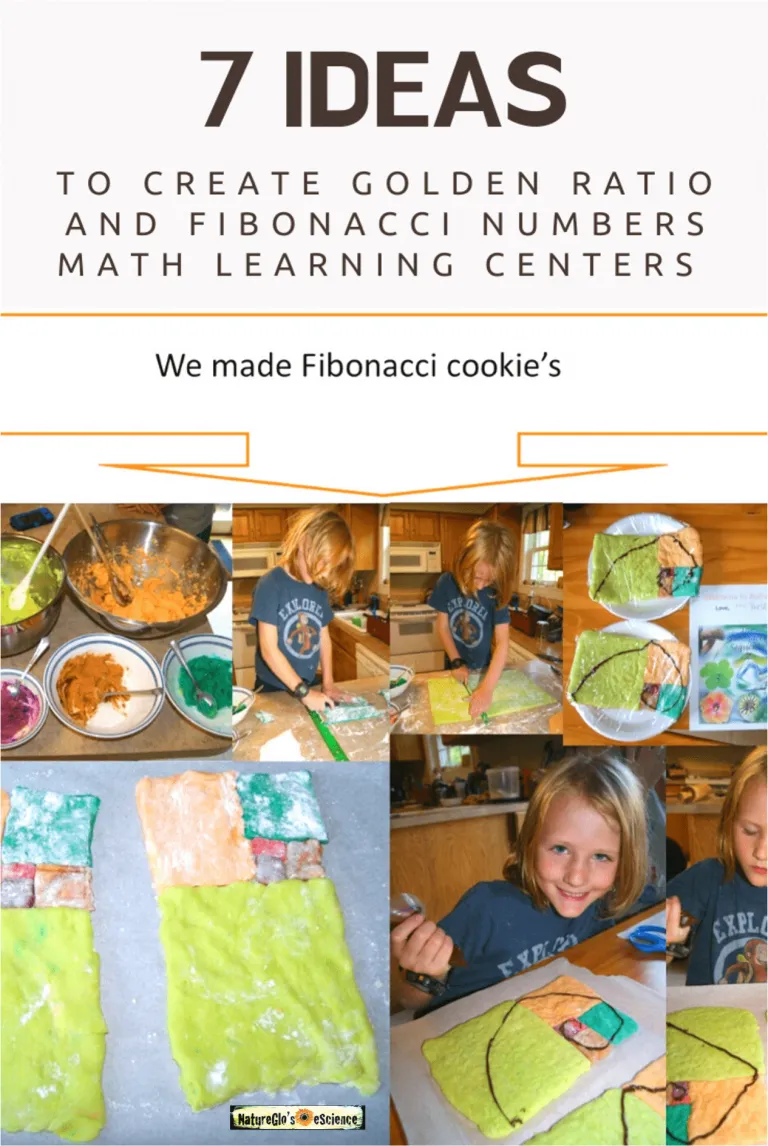
The child is invited to freely explore and discover the math learning resources and is at liberty to self-direct what activities/projects they want to do. This methodology is very similar to the Montessori approach. You can even acquire Montessorri math manipulatives for your math learning centers, if you so desire.
Tip #2 - Include math in unit studies.
Weave rich math connections within children's latest learning obsessions (Hint: it might not look like learning to the adult mind... but, trust me, math is everywhere, even in balloon animals and endless hours of Minecraft). Create rich home and school math learning centers interwoven with science, history, language arts, and art unit study connections.
Tip #3 - Free play with Math.
Allow PLENTY of child FREE play exploration in the math learning centers. What is free play? It's play that is directed by the children and NOT the adults! Adults can observe children play and even be invited BY THE CHILDREN to join in, but, must not interfere with their play, unless of course, someone is about to get seriously hurt, or, are asked to join in with the children's math play.
It can be extremely difficult for adults to simply trust the children to play without interfering. Take baby steps starting now and allow them to play freely and thus learn to problem solve together when conflict arises, or, they want to find the answer to something they don't know. If they need help from the adults, they'll reach out.
Tip #4 - Learning the Golden ratio and Fibonacci numbers is not grade specific.
The Golden ratio and Fibonacci numbers can and should be introduced to children of all ages. I was 23 when I first learned about these numbers from an old beat up Time Life hardback book, below, from the 60's simply called, Mathematics by David Bergamini.
Below, is a sample 2-page spread from Bergamini's book, Mathematics. It beautifully illustrates the Fibonacci numbers and Golden ratio found in nature from the Chambered nautilus to the daisy sead head. This was my first introduction in my early 20's to these mysteriously wonderful numbers!
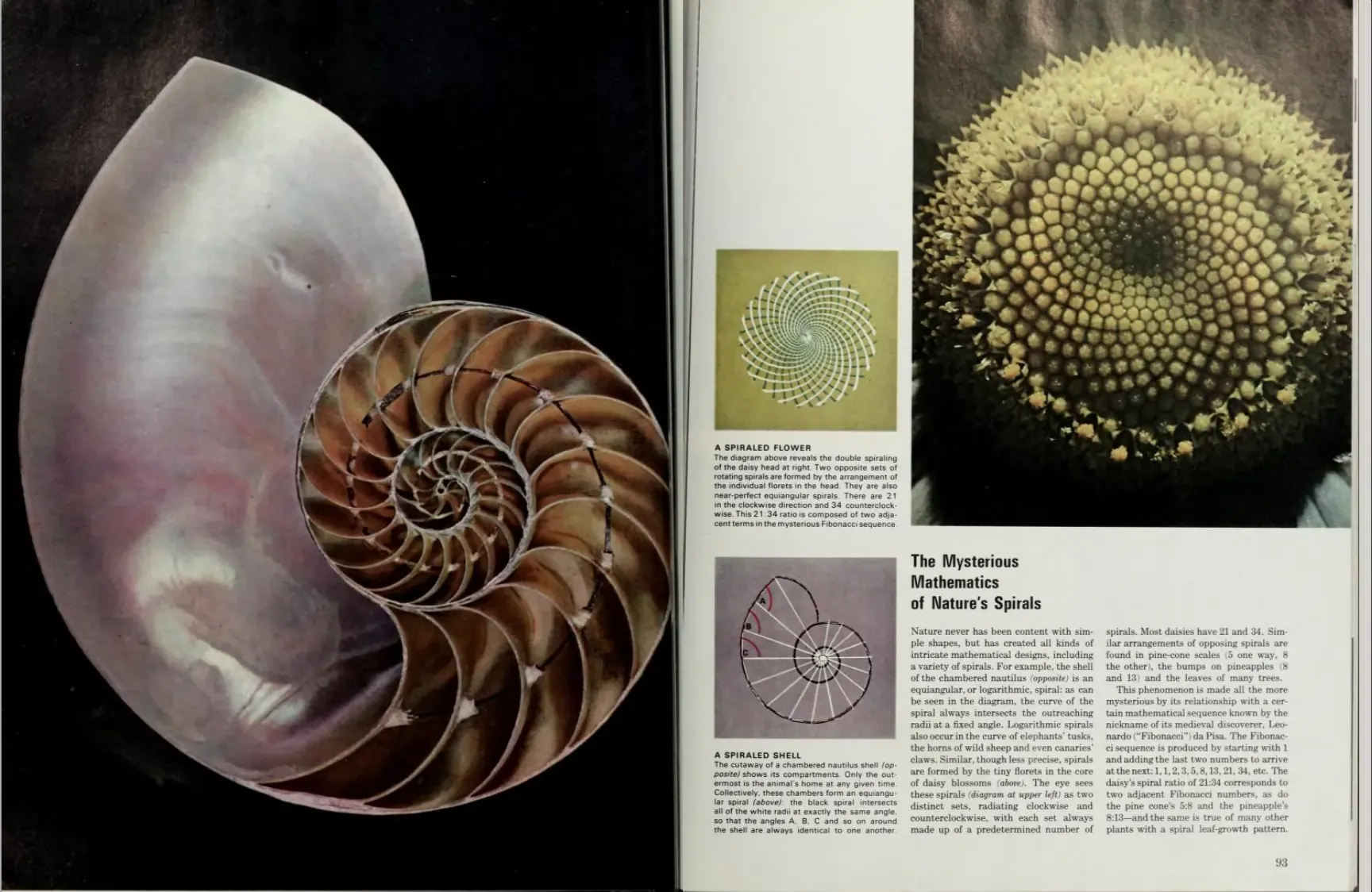
It's never too late to learn the beauty and wonder of these numbers!
I don't kid you when I say that math can become the most exciting hands-on integrative subjects in your homeschool or classroom!
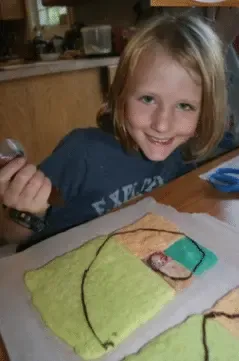
Here's a closeup of my MathArt homeschool learner, Kevin, creating Fibonacci cookies in his home kitchen. Kitchens may not be as accessible in the school learning environment, but, a simple table setup with Play-Doh can mimic creating these cookies.
Math is the Language of Science
But, why is mathematics the language of science? It's the great mystery of the ages, yet number describes all living and non-living things we experience with all of our senses.
Mathematics history shows us that humans discovered mathematics, which makes up the fabric of the universe.
Let's Recap the Golden Ratio:
The Golden ratio is 1.618, an irrational, or infinite number.
It is:
- Known as a proportion of beauty
- Found in the proportions of ancient buildings (Great pyramids), temples, and artwork (da Vinci's Mona Lisa, Salvador Dali's Time)
- Sometimes found in nature such as in the spiral arrangement of leaves, pine cones, and some seashells
- Sometimes found in human or animal body proportions
- Used in human-made systems such as financial markets
Below, you can see the number of spiral turns in this pine cone are 5 counterclockwise turns and 8 counter-clockwise turns. Both are Fibonacci numbers. Pine cones rarely exhibit any other numbers than Fibonacci numbers.
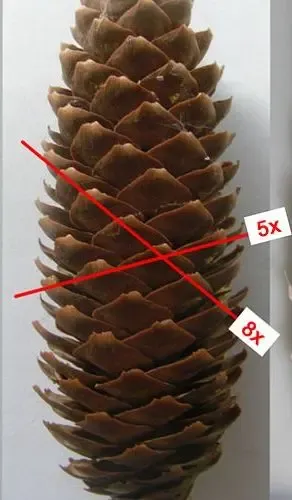
The best and most experiential way for home and school students to engage with mathematics is through very liberal amounts of free play time. Playing with numbers through puzzles, art, cooking, and building projects creates the necessary mathematical connections children will need into their adult lives.
Let's Dive Deeper into the Fibonacci Numbers
The Fibonacci number sequence is 0, 1, 1, 2, 3, 5, 8, 13, 21, 34, 55, 89...etc. into infinity. Do you see the pattern? You add two subsequent numbers, or two numbers next to each other to get the next number. The Fibonacci numbers have a close relationship with the Golden ratio. If you divide the larger number by the smaller number before it, you get closer and closer to the Golden ratio or 1.618.
Fibonacci numbers are found in beautiful and unusual places such as the numbers of flower petals will many times be a Fibonacci number. The. number of spiral turns both clockwise and counterclockwise in pine cones, pineapples, and sunflower seed heads will almost always be Fibonacci numbers. There's a strong possibility of finding the Fibonacci numbers in the newly discovered mineral, quasicrystals atomic make-up.
Even tree branches grow from their trunks at a consistent 222.5° or 360° (divided by) 1.618033 = 222.5°!
More about Why Kids Should Learn about the Golden Ratio
Kids can best be guided to learn about real life math applications through play, puzzles, games, art, cooking, and other real life math connections. The Golden ratio is a beautiful proportion that is found in so many mysterious places. Kids learning about the Golden ratio makes math come alive and makes MATH FUN!
Tip #5 - Set up Golden Ratio and Fibonacci Numbers Home and School Math Learning Centers.
Here's how to set up Golden ratio and Fibonacci Numbers learning centers in your homeschool or classroom:
Step #1 - Collect several old tables (think thrift stores) of various sizes and lengths and arrange them in your home or classroom.
Step #2 - Set up various science and math learning centers on the tables using natural objects from outdoors. Use natural objects exhibiting spirals (pine cones, daisies, sunflowers etc.) and flowers with their petals intact. This will entice your kids to dive deep into math naturally, without thinking it's "math learning".
Step #3 - Create an interactive display of laminated Golden ratio works of art: Mona Lisa, Rembrandt's Self Portrait, Salvador Dali's, Time, to name a few. Add erasable markers where the kids can draw the Golden ratio frameworks around the paintings.
Step #4 - Use NatureGlo's Fibonacci Numbers lapbook/interactive notebook from the Golden Ratio Fibonacci Numbers PowerPoint BUNDLE for one of the math centers.
Check out this brief video lesson clip below about the Golden ratio's relationship with and the Mona Lisa painting.
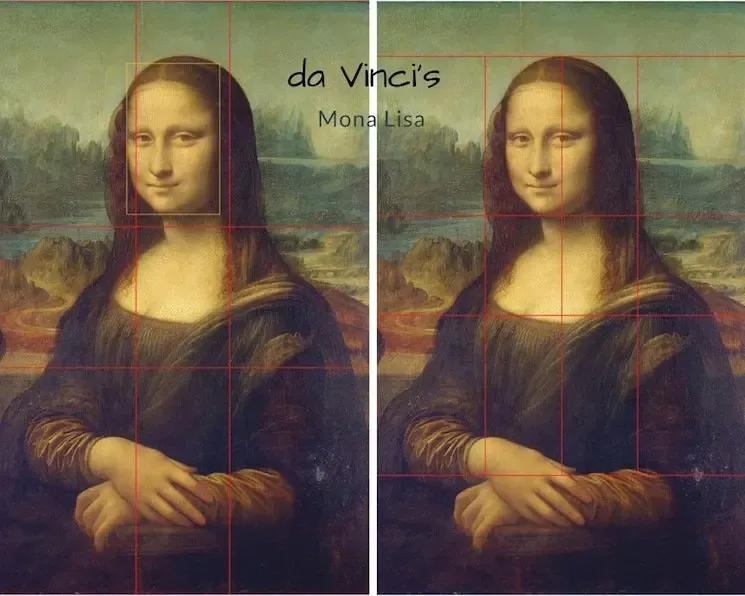
Children can draw these lines over blank laminated copies of the same images. The image on the left shows the entire canvas within the golden ratio. The Golden rectangle is also drawn about Mona Lisa's face. The image on the right shows that her eye is aligned with the center of the canvas. Golden ratio lines from the center of the painting to the sides of the canvas align nicely with the width of her hair. There may also be golden ratios in the vertical dimensions of the painting. Photos credit: Gary Meisner, Goldennumber.net
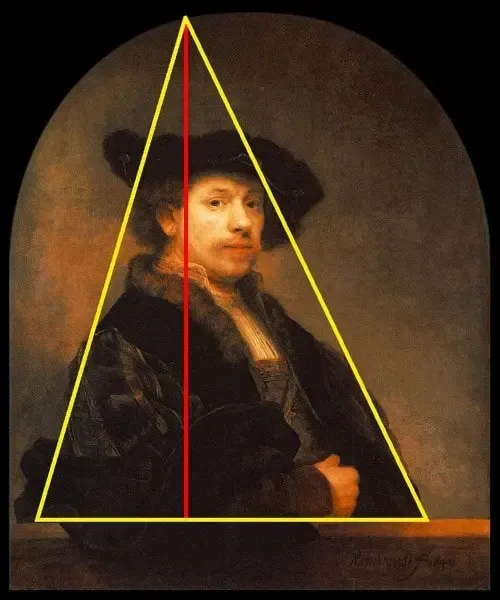
Rembrandt's self-portrait here is within the golden triangle. The golden triangle, also called the sublime triangle, is an isosceles triangle wherein the ratio of the hypotenuse a to base b is equal to the golden ratio, a/b=phi.
Learning centers for math connected with topics that kids love and are passionate about such as outer space, trees, Barbi dolls, or whatever your kiddos are into, will inspire, motivate, excite, and set off your children's creative juices.
They will go into what most adults shut down and are unaware of: the child's rather remarkable creative headspace that most adults have lost.
THIS, my home and school educator friends, is the holy grail of math education!
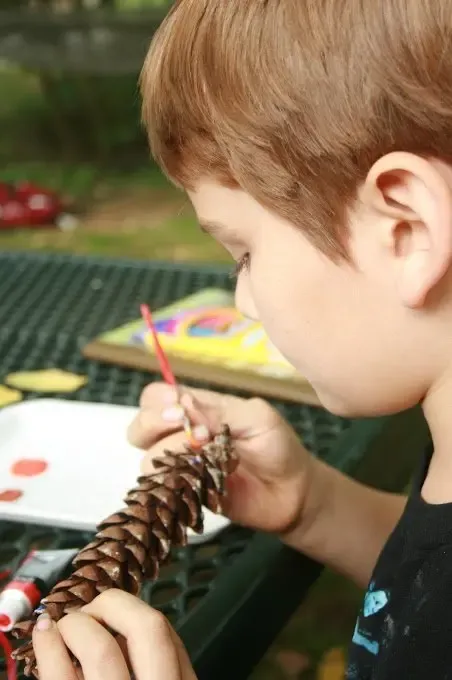
Here's homeschool learner, Jack, sitting outside at an outdoor math learning center, painting each of the Fibonacci numbered spirals around a pine cone.
Tip #6 - WATCH carefully what your kids do with math when it's connected to things they love and are passionate about.
The human mind is a mathematical machine making thousands, perhaps millions of mathematical decisions per second (think about the miracles of sensory awareness: sight, sound, hearing...all enabled through the mathematical calculations constantly at work etc), which most of us are unaware of. Kids will naturally WANT to make and create mathematical connections in whatever they're interested in.
Why Create Fibonacci Number Math Learning Centers?
Fibonacci numbers have a deep and rich relationship with nature. They also have a very close relationship with the Golden ratio, by dividing the larger number by its previous number and you get closer and closer to the Golden ratio, 1.618. This is why the numbers pair well together.
The best math learning experiences are connecting mathematics with the real world. Fibonacci numbers are a beautiful and fun way to make those connections.
What is NatureGlo's MathArt?
In my math and natural sciences online unit study courses, I teach a year long course called MathArt. MathArt is a rich exploration of maths starting with a backbone of mathematics in history. We also cover the Golden ratio and Fibonacci numbers in great detail.
During MathArt, kids dive deep into ancient maths history and see the connections there are with math, art, architecture, music, nature, and literature. We study the mathematics history of the ancient Babylonians, Greeks, Maya, India, Middle East, and more!
Check out this rich resource below. It's my Golden Ratio and & Fibonacci Numbers PowerPoint bundle. It's already created for you helping you implement these living maths into your homeschool or classroom.
ORDER NOW, NatureGlo's Golden Ratio and Fibonacci Numbers Unit Study BUNDLE below.
Our modern day mathematics education has been replaced with a dry factory-like view of mathematics, stripped of numbers true beauty, wonder and connections with the real world.
The connections there are with the natural world and mathematics is truly astonishing, beginning with the Golden ratio and Fibonacci numbers found in the plant and animal kingdoms and even in some mineral structures!
The golden ratio can also be found in ancient architecture such as the Great Pyramid of Egypt and the Greek Parthenon. This is a natural lead into ancient history studies. These connections are like searching for hidden treasure which makes learning fun rather than a chore.
Do you want to get a jumpstart giving your kiddos a vision for your Golden ratio and Fibonacci math learning centers?
Grab my Golden Ratio and Fibonacci Numbers PowerPoint BUNDLE!
Who's the Golden Ratio and Fibonacci Numbers PowerPoint BUNDLE great for?
This bundle is great, especially for introducing the Golden ratio and Fibonacci number concepts to home or school middle or high school math students used to and wanting more instruction from the home or school educator through PowerPoint lessons. They're great for group classroom instruction.
FULL DISCLOSURE: NatureGlo's online courses and PowerPoint BUNDLES all have been homeschool and school kid approved since 2011.
What's the Easiest Way to Get Started with Golden Ratio and Fibonacci Numbers Math Learning Centers?
Tip # 7 - Get outdoors into nature's greatest math learning center of all!
Looking for Fibonacci numbers (1, 1, 2, 3, 5, 8, 13, 21, 34...etc.) in: Look for Fibonacci numbers found in the number of spiral turns in pine cones. Look for Fibonacci in the numbers of flower petals.
Finally, get NatureGlo's FREE Fibonacci Numbers in Nature Lapbook or interactive notebooking templates below.
Introducing NatureGlo's Fibonacci Numbers in Nature Lapbook
One of my favorite tried and true FREE math printables is my NatureGlo's Fibonacci Numbers in Nature Lapbook. Yes, I'm the writer and creator of this resource for homeschool and school educators. It's a great resource for any homeschool style. However, the mindset behind it is to invite children to look at the wonder and beauty of math all around them within math's practical application.
Here's how to get NatureGlo's Fibonacci Numbers in Nature Lapbook:
- Add your first name and email into the given fields.
- Check your inbox or Spam box (you might need to wait up to 15 - 30 minutes to receive the email depending on server times
- Confirm your subscription
- You'll immediately receive your freebie after confirming your subscription!
Conclusion
Here you've learned some quick and easy steps helping you get started with creating Golden ratio and Fibonacci number math learning centers for upper elementary, middle, and high school math students.
It's as easy as:
Getting some old tables from a thrift store. Printing out and laminating a few famous paintings with some dry erase markers. Collecting natural objects such as pine cones and flowers and arranging them nicely on one of your math learning center tables.
Bringing your kiddos out into Nature's greatest outdoor math learning center of all looking for the golden ratio and Fibonacci numbers in nature...and you're off on the greatest math learning adventure and your kiddos could possibly have!
Scroll down below and share any comments or questions about this topic.
I'd love to hear from you!
Hey, and check Out This Blog Post Next: How to Strew Homeschool Math
Talk soon!
NatureGlo
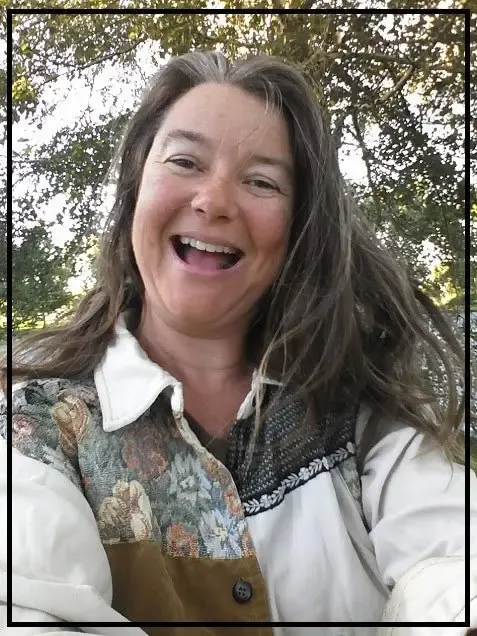
Hi, I'm Gloria Brooks! I'm into education reform! Since 2011, I've had the privilege of teaching/facilitating thousands of faith-based and secular homeschool and unschool families around the globe. I hold a BA in K - 12 education, certificates from the Wilderness Awareness school, and over 20 years of eclectic teaching and child self-directed learning experiences in private schools, and homeschool online courses with NatureGlo's eScience. NatureGlo's eScience is a one-stop nature-based eLearning center for kids ages 8- 18 helping them fall in love with the natural world while covering other academics.
AS FEATURED ON:



